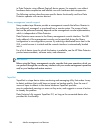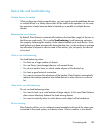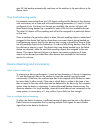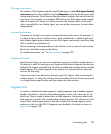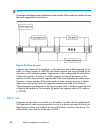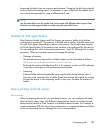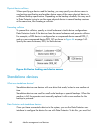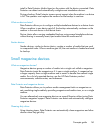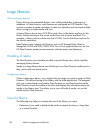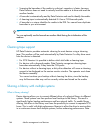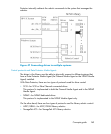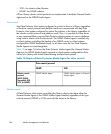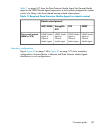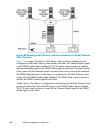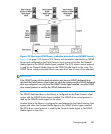Large libraries
What are library devices?
Library devices are automated devices, also called autoloaders, exchangers or
jukeboxes. In Data Protector, most libraries are configured as SCSI libraries. They
contain a number of media cartridges in a device’s repository and can have multiple
drives writing to multiple media at a time.
A typical library device has a SCSI ID for each drive in the device and one for the
library robotic mechanism that moves media from slots to drives and back. For
example, a library with four drives has five SCSI IDs, four for the drives and one for
the robotic mechanism.
Data Protector also supports silo libraries, such as HP StorageWorks Libraries,
StorageTek/ACSLS and ADIC/GRAU AML. For a list of supported devices, see the
HP Data Protector product announcements, software notes, and references.
Handling of media
The Data Protector user interface provides a special library view, which simplifies
managing library devices.
Media in a large library device can all belong to one Data Protector media pool, or
they can be split into several pools.
Configuring a library
When configuring a device, you configure the slot range you want to assign to Data
Protector. This allows sharing of the library with the other application. The assigned
slots may contain blank (new) media, Data Protector or non-Data Protector media.
Data Protector checks the media in the slots and displays the information about the
media in the library view. This allows you to view all kinds of media, not just the
media used by Data Protector.
Size of a library
The following may help you estimate the size of the library you need:
• Determine if you need to distribute the media to several locations or keep them
in a central location.
Media management and devices162



